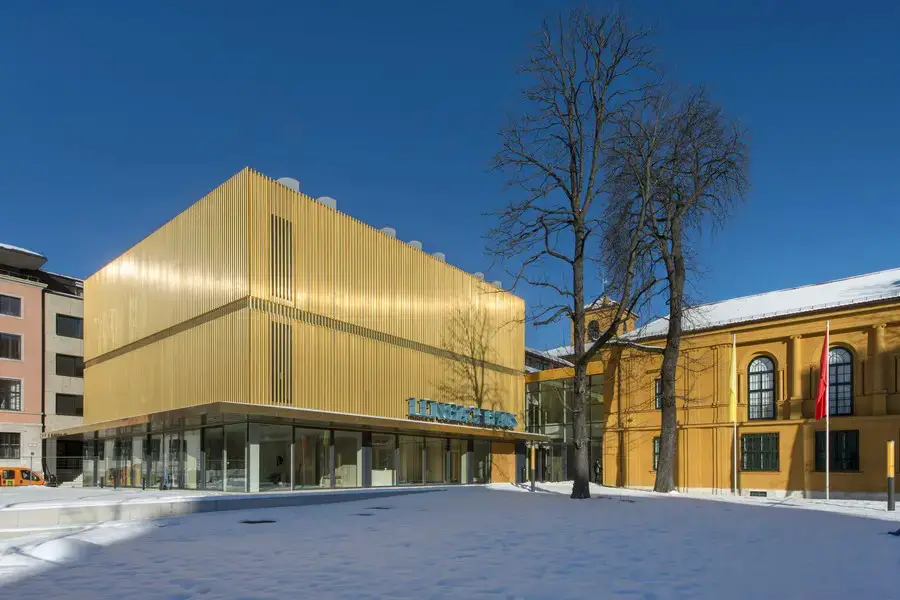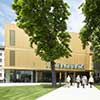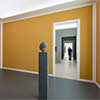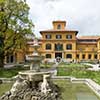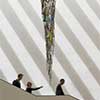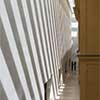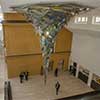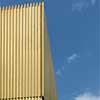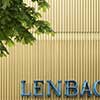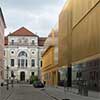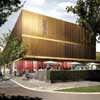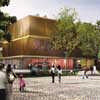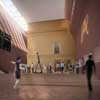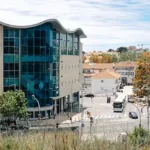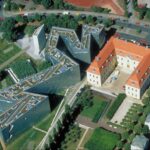Lenbachhaus Museum, Munich Arts building, Architecture, Images, Architect, Design, Project
Lenbachhaus Museum : Munich Architecture
Historic German Building design by Foster + Partners
7 May 2013
Design: Foster + Partners
Location: Munich, Germany
Historic Bavarian Building Redevelopment
Address: Luisenstraße 33, 80333 München, Germany
Phone: +49 89 23332020
Lenbachhaus Museum Reopens
A ceremony has been held today, attended by German Culture Minister, Mrs Wanka; the Mayor of Munich, Mr Ude; Lord Foster and Dr Helmut Friedl, Director of the Lenbachhaus Museum, to mark the completion of a major project to transform the experience for visitors.
The Museum’s historic buildings have been carefully restored and the exhibition spaces augmented by a spectacular new wing, which provides an ideal environment for viewing the magnificent ‘Blue Rider’ collection. As well as radically improving the buildings’ environmental performance, the remodelling has created a new entrance and social spaces, including a restaurant, terrace, education facilities and a dramatic full-height atrium, where the old is articulated within the new.
Built in 1891 as a studio and villa for the artist Franz von Lenbach, the Lenbachhaus Museum has been gradually extended over the last century. However, its buildings were in need of renewal and the museum lacked the facilities to cater to a growing audience of 280,000 people a year. Redefining circulation throughout the site, the project has transformed a complex sequence of spaces of different periods into a unified, legible museum that is accessible and open to all.
Peeling away the unnecessary historical accretions, a 1972 extension has been removed to reveal the wall of the original villa, which has been sympathetically restored in ochre render. The different historical elements are then unified along Richard-Wagner Street by a new gallery pavilion, containing two levels of exhibition space.
The new building is intended as a ‘jewel box’ for the treasures of the gallery – it is clad in metal tubes of an alloy of copper and aluminium, their colour and form designed to complement the villa’s rich ochre hue and textured facades.
Inside the new building, a sequence of intimate galleries display the Museum’s internationally-renowned ‘Blue Rider’ collection of early twentieth-century Expressionist paintings, echoing the domestic scale of their original setting in the villa Lenbach. As many of the works of art were painted in ‘plein-air’, indirect natural light has been deliberately drawn into the upper level galleries to create the optimum environment for their display.
A new entrance has been created adjacent to the restaurant, accessed via a new landscaped piazza to the east of the museum – this move reclaims the courtyard garden, turning it from a pedestrian thoroughfare into a tranquil space for visitors. The restaurant is open outside of the Museum’s opening hours and its seating continues outside, helping to enliven the surrounding streets and attracting new visitors into the galleries.
The new social heart of the building is a dramatic top-lit atrium, with ticket and information desks, access to a new temporary exhibition space on the ground floor and a grand, cantilevered stair to the upper level galleries. Clearly articulating the old within the new, its impressive volume incorporates the ochre exterior wall of the original villa and is scaled to accommodate large-scale works of art.
The Museum commissioned the artist Olafur Eliasson for a site specific work titled Wirbelwerk. During the day sunlight washes the white walls via a long, slender opening at roof level and horizontal louvres cast changing patterns of light and shade within the space.
As well as repairing the fabric of the existing buildings, one of the main aims of the project has been to radically improve the museum’s environmental performance. A water-based heating and cooling system within the floors has been implemented – using significantly less energy than an air based heating, this represents an innovative step in a gallery context. Rainwater is also collected and recycled and lighting has been replaced and upgraded with low-energy systems.
Lord Foster:
“Our main challenge has been to maintain the same amount of exhibition area, within the museum’s footprint, while creating new circulation and visitor spaces. Given the way that the different parts of the museum had evolved, there was no such thing as a typical space – every corner is unique and required individual attention and different design decisions.
This has been a fascinating process. Another important aspect of our design has been creating new opportunities for works of art to be exhibited outside the traditional confines of the gallery, such as in the atrium. This space develops the idea of the ‘urban room’ – it is the museum’s public and social heart, and point of connection with the wider city.”
Lenbachhaus Museum – Building Information
Lenbachhaus, Munich, Germany
2002-2013
Client: City of Munich, Cultural Department and Building Department
Architect: Foster + Partners
Design Team: Norman Foster, David Nelson, Stefan Behling, Christian Hallmann, Ulrich Hamann, Klaus Heldwein, Florian Boxberg, Leonhard Weil, Judith Kernt, Henriette Hahnloser, Eike Danz, Diana Krumbein, Simon Weismaier, Christopher Von Der Howen, Inge Tummers, Jörg Grabfelder, Katrin Hass, Tillmann Lenz
Project Management: DU Diederichs Projektmanagement
Structural Engineer: Sailer Stepan & Partner GmbH
Mechanical Engineer: Ingenieurbüro Robert Ottitsch (HLS + RLT), PEG GmbH (Elektro)
Quantity Surveyor: CBP Cronauer
Cost Consultant: Höhler + Partner
Landscaping: Burger Landschaftsarchitekten
Lighting Design: Ingenieurbüro Bamberger
Reopening of Lenbachhaus Museum information / images from Foster + Partners
Previously:
Lenbachhaus Museum Munich
Extension + Restoration, Richard-Wagner Strasse
2007-
Design: Foster + Partners
Foster + Partners stages major exhibition at Lenbachhaus Museum, Munich
In celebration of Foster + Partners’ forthcoming project to remodel and extend the “Städtische Galerie im Lenbachhaus”, the museum is hosting an exhibition to preview the design for the Städtische Galerie and to explore a number of related works, which address the theme of working with history. This strand of the practice’s work is rooted in a belief that a passion for structures from the past can coexist with a pleasure and anticipation for the architecture of the future.
The design scheme for the museum reveals a dignified and sensitive addition to Franz von Lenbach’s historic villa. A new entranceway and an opening towards the Propylees and adjacent Königsplatz strengthen the museum’s relationship to the city, while the new Atrium space and a new visitor guidance system will provide the best possible environment to showcase the museum’s internationally celebrated collection.
The exhibition further explores a number of related works, which demonstrate how new architecture can be the catalyst for the revitalisation of old buildings, including the New German Parliament at the Reichstag in Berlin; the Carre d’Art, Nimes; the Sackler Galleries at the Royal Academy of Arts, London; The Great Court at the British Museum, London; and the recently completed Smithsonian Institution Courtyard, Washington DC.
Current work on show includes projects in Russia – the New Holland Island Cultural quarter in St Petersburg and the Pushkin Museum of Fine Arts Extension In Moscow – and the Boston Museum of Fine Arts in the USA.
As Norman Foster has written:
‘The history of our cities is the history of change – each age produces its own vocabulary and makes it own mark. Similarly, in buildings that have evolved over time the original layers of history can often be understood more readily when seen alongside the new. Sometimes we have to explore the past to find inspiration for the future.’
Lenbachhaus Museum images / information from Foster + Partners
Lenbachhaus Museum design : Foster + Partners
Location: Lenbachhaus Museum, Munich, Bavaria, Germany
Munich Architecture Developments
Munich Architecture Designs
Munich Architecture Design – chronological list
Munich Architecture Walking Tours – architectural walks by e-architect – experienced building guides
Headquarters Microsoft Germany
Design: HPP Architects
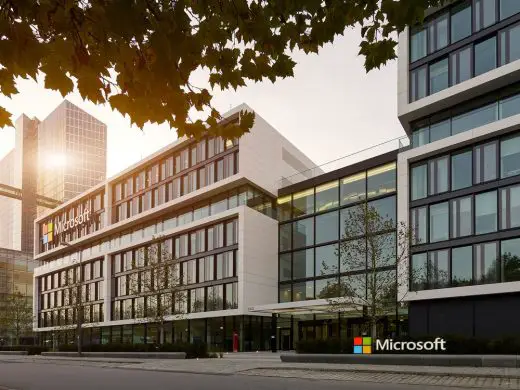
picture from architects
Microsoft Germany Headquarters Building
House V
Architect: Jakob Bader
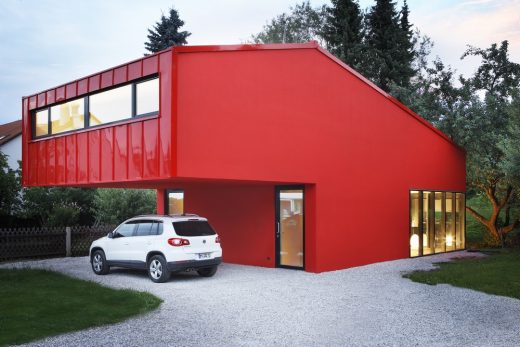
photograph : Kai Arndt, Munich
House V in Munich
Munich Stadium Building – Allianz Arena
Munich Nazi Documentation Centre
Lenbachhaus Museum architect : Foster + Partners Architects
Comments / photos for the Lenbachhaus Museum Munich – Architecture in Bavaria by Norman Foster page welcome.
Website: www.lenbachhaus.de

